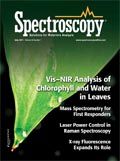Two New Chemical Elements Recognized
Chemistry's periodic table has two new man-made elements. Atomic numbers 114 and 116, for now unnamed elements, have been recognized by the International Union of Pure and Applied Chemistry (IUPAC), which credited a Russia-United States collaboration with their discovery.
Chemistry’s periodic table has two new man-made elements. Atomic numbers 114 and 116, for now unnamed elements, have been recognized by the International Union of Pure and Applied Chemistry (IUPAC), which credited a Russia–United States collaboration with their discovery.
IUPAC has invited the collaborating scientists, from the Joint Institute for Nuclear Research in Dubna, Russia, and Lawrence Livermore National Laboratory in California, to propose names for the new elements. For now, elements 114 and 116 retain their provisional number-based names, ununquadium and ununhexium, respectively.
Both the newly vetted elements have higher atomic numbers than any element yet recognized by IUPAC. All elements with atomic numbers above 92 decay relatively quickly and are mostly man-made, although elements 93 and 94 (neptunium and plutonium) do exist naturally in trace quantities.
Scientists have been creating new elements since 1940, when neptunium and plutonium were first forged at the University of California, Berkeley.

Best of the Week: AI and IoT for Pollution Monitoring, High Speed Laser MS
April 25th 2025Top articles published this week include a preview of our upcoming content series for National Space Day, a news story about air quality monitoring, and an announcement from Metrohm about their new Midwest office.
LIBS Illuminates the Hidden Health Risks of Indoor Welding and Soldering
April 23rd 2025A new dual-spectroscopy approach reveals real-time pollution threats in indoor workspaces. Chinese researchers have pioneered the use of laser-induced breakdown spectroscopy (LIBS) and aerosol mass spectrometry to uncover and monitor harmful heavy metal and dust emissions from soldering and welding in real-time. These complementary tools offer a fast, accurate means to evaluate air quality threats in industrial and indoor environments—where people spend most of their time.